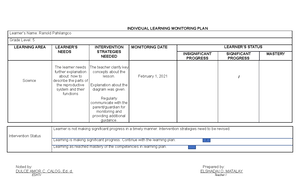- Information
- AI Chat
Was this document helpful?
HIS003 Module 2 Geographical Setting of Mindanao
Course: Bachelor of Secondary Education (BSED)
999+ Documents
Students shared 2392 documents in this course
University: Mindanao State University
Was this document helpful?

Mindanao State University
College of Social Sciences and Humanities
Marawi City 9700, Philippines
LESSON 1.2 Geographical Setting
NOTE: This is to help students to understand the course as per mandated by Mindanao State University. This is partial and
subject for improvement. The sources that used are mainly coming from authentic books in history. This is just for classroom
purpose only.
FACTS ABOUT MINDANAO
As of the 2010 census, the island's population itself is 20,281,545 people, while the
Mindanao island group had an estimated population of 25,537,691 (2018) inhabitants.
Mindanao is the second largest island in the Philippines at 104,630 square kilometers, and
is the eighth most populous island in the world. The island of Mindanao is larger than 125
countries worldwide, including the Netherlands, South Korea, Austria, Portugal, Czech
Republic, Hungary, and Ireland.
The island is covered by 6 administrative regions, 22 provinces, and 30 cities (27 provinces
and 33 cities if associated islands are included).
More than 70% of the population of Mindanao adhere to Christianity. Roman Catholicism is
the largest single religious affiliation at 60.9 percent of the total household population.
Islam comprises 20.44%, while a figure as high as 40% has been cited. Muslims were
formerly the majority until the influx of Christian Filipino settlers in the 20th century.
MINDANAO
The region is partitioned by Sulu Sea. It is surrounded by body of water, from the north
(Visayas) by the Mindanao strait or Visayan Sea, Pacific Ocean on the east, Sulu Sea on the West,
and Celebes Sea on the South .As an island in the southern part of the country, Mindanao is the
second largest with 94,630 sq. km. The island is mountainous with Mt. Apo in Davao as the highest
mountain in the country. The island consists of six administrative regions and divided into *26
provinces.
SIX (6) ADMINISTRATIVE REGIONS
1. Zamboanga Peninsula (Reg. 9)- composes of the provinces of Zamboanga del Norte,
Zamboanga del Sur and Zamboanga Sibugay with two cities, Zamboanga City and Isabela City.
Pagadian is the administrative capital of the region. Zamboanga City is also known as the little
Spanish city, Zamboanga Hermosa and Asias Latin City. The term Zamboanga is derived from a
Badjao word ‘Samboangan’ which means “port”. On the other hand, it is also derived from a
Subanen word Jambangan which means land of “flowers”.
Learning Outcomes:
At the end of this lesson, students will be able to:
1. Illustrate the geographical setting of Mindanao
2.
Know the political, socio-economic and cultural map of Mindanao










